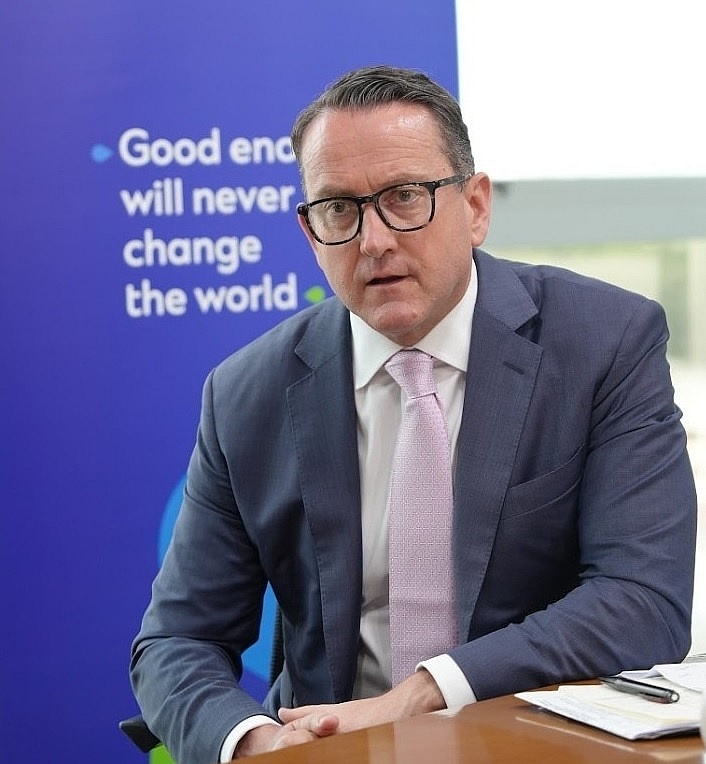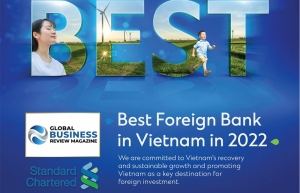The significance of Vietnam for US businesses and why they should take notice
Vietnam has benefited from the trade tensions between the United States and China. With US companies adopting a China-plus-one approach to their supply chains, the percentage of exports from Vietnam to the US has risen by approximately nine per cent between 2018 and 2021.
 |
| Steven Cranwell, CEO and Regional Head, Client Coverage, Americas |
It is, however, important to note that Vietnam was an alternative to China for general manufacturing in Asia long before the pandemic, and its long-term prospects remain bright.
Despite the uncertainty of global economic conditions, many remain confident in Vietnam’s outlook. The country’s business-friendly atmosphere, its strategic location as a gateway to other fast-growing markets, the plentiful supply of skilled labour, and the competitive costs and incentives are compelling propositions for companies looking to expand their manufacturing in the region.
While Vietnam has yet to host an Apple plant, the country is already home to 31 companies with 160,000 staff producing and assembling parts for Apple products. Other tech companies such as Intel are also planning to increase their investments in the country. Nike is another example of a company that has expressed an interest in expanding its investment and production in Vietnam.
The recent increase in the S&P Global Vietnam Manufacturing Purchasing Managers' Index to above 50.0 in February is a positive sign of its manufacturing sector's renewed strength.
Vietnam holds numerous advantages for US corporates
ASEAN is poised for long-term prosperity and is on track to become one of the world’s largest trading blocs, benefitting from global supply chain shifts and favourable demographics. It is one of the few economic blocs in the world where every major economy wants to do further business, and the opportunities in trade, investment, digitalisation, and sustainable finance are well acknowledged.
As the only international bank present in all 10 ASEAN markets, Standard Chartered is well-placed to advise clients looking to expand into ASEAN and beyond.
Over 90 per cent of the 500 global business leaders it recently surveyed indicated plans to expand in ASEAN, and over 80 per cent mentioned that they will increase investments in the region. This is consistent with feedback from US-based respondents, where 92 per cent have existing and future plans to expand sales in the region and 51 per cent currently have, or plan to have, production capabilities in Vietnam.
While the bank is optimistic that more respondents will increasingly formulate plans to expand into Vietnam, there are challenges to ensure this trajectory continues at pace.
It is not uncommon to hear of companies voicing concerns that Vietnam's infrastructure needs improvement, particularly in terms of ports, transportation infrastructure, and logistics capabilities, for the country to continue its rate of growth.
Additionally, Vietnam's reliance on raw materials from China may impede the diversification efforts of companies, as production may be disrupted if supplies from China cease. For example, the garment and textile industry relies on China for 70-80 per cent of its materials.
However, these challenges come with opportunities. To enhance the national transportation network, the country’s Transport Infrastructure Master Plan is expected to support the upgrading of all transport infrastructure by 2030 and solve Vietnam’s traffic and congestion issues through public-private investments.
Vietnam participates in numerous Free Trade Agreements (FTAs). Some of them include the Regional Comprehensive Economic Partnership (RCEP), the Comprehensive and Progressive Agreement for Trans-Pacific Partnership, the EU-Vietnam FTA, and the UK-Vietnam FTA – all of which will improve the country’s ability to participate in both global and regional supply chains. This in turn enables businesses established in Vietnam to diversify and access a broader range of markets with favourable conditions.
Foreign Direct Investment to support the country's growth is also expected to continue through attractive tax and investment schemes. For example, special sectors like healthcare, technology, renewable energy, and infrastructure development can expect to receive preferential corporate income tax rates. Projects in specific sectors and regions may also qualify for tax exemptions and reductions if they meet specific criteria.
Finally, as industries transition into more sustainable sources of fuel, Vietnam is well-positioned to partake in the energy transition. With the country’s recent agreement to be part of the Just Energy Transition Partnership, it will stand to benefit from an initial $15.5 billion of public and private finance over the next 3-5 years to support the country’s shift to renewable energy sources.
Given Vietnam's access to various renewable energy sources, such as solar, wind, biomass, and hydropower, it is evident that there will be significant growth opportunities for businesses involved in promoting clean energy, sustainable infrastructure, and decarbonisation technologies.
Vietnam is set to become one of the most important players in the Indo-Pacific and is making significant investments in the region. With certain geopolitical tensions persisting, and the RCEP estimated to further enhance regional growth, Vietnam's draw as a growth market and manufacturing hub is likely to rise as companies seek to expand in ASEAN. Companies that take notice will only stand to benefit.
 | Standard Chartered Vietnam takes lead in sustainability efforts Standard Chartered Vietnam is continuing to lead the way in sustainability and, in turn, drive growth for its customers and the economy at large. |
 | What Vietnam could learn from Singapore A close partnership between Singapore and Vietnam will enable them to capitalise on the wealth of opportunities that digitalisation and sustainability offer. Michele Wee, CEO at Standard Chartered Bank Vietnam, talked to VIR’s Nhue Man about spurring prosperity for both nations and fostering greater interconnectivity within ASEAN. |
What the stars mean:
★ Poor ★ ★ Promising ★★★ Good ★★★★ Very good ★★★★★ Exceptional
 Tag:
Tag:
Related Contents
Latest News
More News
- Global partnerships key to Vietnam’s IFC development (December 26, 2025 | 16:18)
- Vingroup pulls out of bid to invest in North-South high-speed railway (December 26, 2025 | 11:42)
- Strengthening supply chains through trade promotions and customs reform (December 24, 2025 | 14:00)
- PM orders investment model for North–South high-speed rail (December 22, 2025 | 17:43)
- LS Eco Energy to invest in Vietnam rare earth sector (December 22, 2025 | 17:31)
- Government moves to establish International Financial Centre (December 21, 2025 | 21:00)
- Vietnam's IFC to target global investment flows (December 21, 2025 | 18:00)
- Two national hospitals expand capacity with new facilities (December 20, 2025 | 09:00)
- Ha Tinh breaks ground on major Vingroup industrial and energy projects (December 19, 2025 | 18:24)
- EVN launches major power infrastructure projects nationwide (December 19, 2025 | 18:17)





















 Mobile Version
Mobile Version